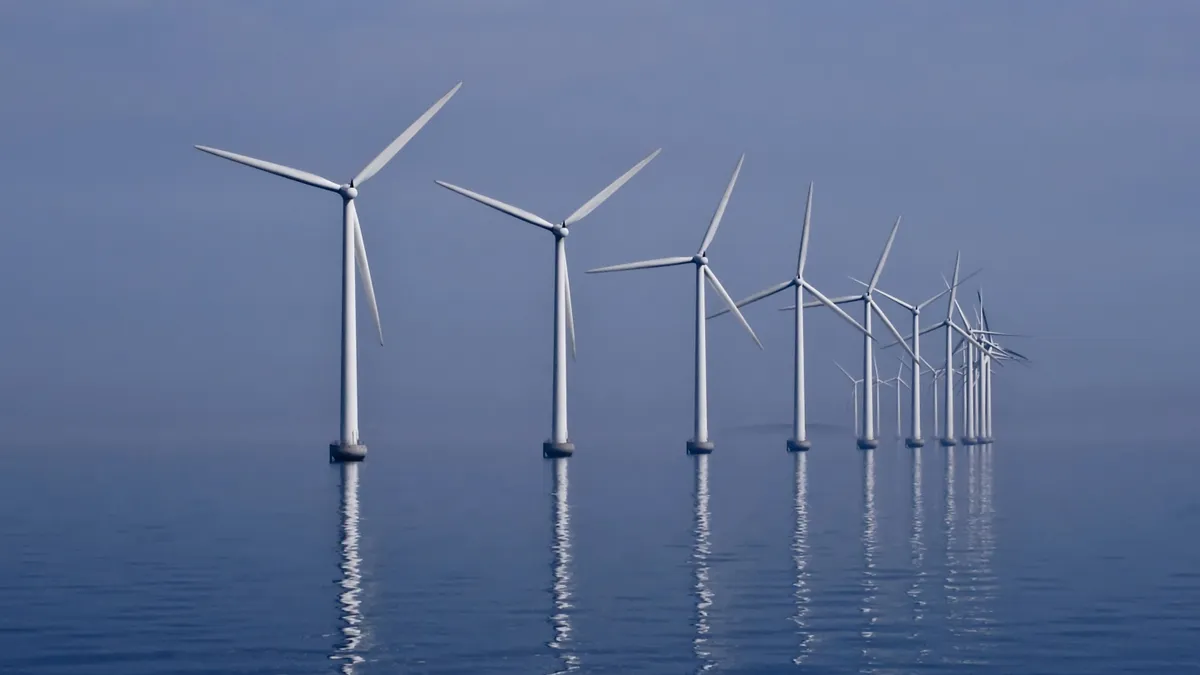Dive Brief:
-
Electric power groups are at odds with how New Jersey should mitigate the impacts of a controversial federal rule on its offshore wind market.
-
Public Service Enterprise Group (PSEG) and Exelon urged New Jersey regulators in joint comments filed Wednesday to establish a single-zone fixed resource requirement (FRR) alternative, arguing that method is the best way to meet the state's 100% clean energy goals.
-
But competitive power generators opposed such a move and told regulators to instead adopt a mechanism similar to the New England ISO's Competitive Auctions with Sponsored Policy Resources (CASPR) design. "Such a market design could accommodate New Jersey's offshore wind goals while maintaining the unquestionable benefits of the competitive markets," the Electric Power Supply Association wrote in its comments.
Dive Insight:
New Jersey regulators in March opened an investigation into how the state could meet its 100% carbon-free electricity by 2050 goals under the federally-approved minimum offer price rule (MOPR). Experts say the rule, which effectively raises the bidding price floor for all new state-subsidized resources, will prevent more nascent industries, such as offshore wind, from bidding into the market.
States have been threatening a capacity market exit since the MOPR was first approved by the Federal Energy Regulatory Commission in December. But the commission's April decision to uphold the order put greater urgency on regulatory action, particularly as the COVID-19 crisis quickly took over legislative and gubernatorial priorities.
Regulators have not held back back — Maryland and New Jersey have both indicated they are serious about developing an FRR alternative, and two of New Jersey's utilities now say the idea is not only feasible, but may be the best option the state has to reach its renewable energy goals.
"An Integrated FRR Procurement will allow New Jersey to fully and timely achieve its EMP goals at a lower cost for consumers than they would otherwise pay, by avoiding the inefficiencies that will result from FERC's new bidding rules in the PJM capacity auction," Exelon and PSEG wrote in their comments.
The limited FRR zone would require state regulators to identify a capacity zone with the most renewable energy potential, and create a capacity plan to meet its load. The idea is to go zone-by-zone as the state moves further toward its energy goals, slowly phasing additional zones out of the PJM capacity market and into the FRR alternative.
PJM's independent market monitor last week released a study that found establishing an FRR in New Jersey could cost the state between $32 million and $386.4 million more than PJM's 2021/2022 capacity auction would. Monitoring Analytics president told Utility Dive that no matter the form of the FRR, it would cost the state because it's a nonmarket approach that cannot better the results of a wholesale market.
"The idea that there is a mysterious good FRR design that no one has yet described is fallacious. There is no good FRR design. Well designed markets provide benefits to customers and shift risk to sellers. The FRR approach would reverse that," he said in an email last week.
Exelon and PSEG address the market monitor's report in its comments, calling it a "seriously flawed" analysis. "The IMM analysis incorrectly assumes New Jersey would not take advantage of lower cost capacity outside" the Mid-Atlantic region, the utilities write.
"This assumption places artificial constraints on the analysis that are inconsistent with PJM's FRR and other market rules. ... In contrast, the Integrated FRR Procurement described herein would take advantage of the ability under PJM rules for FRR entities to obtain capacity from resources outside of the [Mid-Atlantic region] at lower prices, consistent with conditions of supply and demand in the neighboring regions," they continue.
EPSA also opposes the FRR alternative, favoring instead "market-based solutions" such as the CASPR.
"The FRR is a costly and risky mechanism to meet the state's objectives and introduces new challenges during a time of great uncertainty and economic strain," EPSA wrote in its comments. "Exiting the market will increase costs, create new reliability challenges, reduce competition, and inhibit, not advance, the achievement of New Jersey's goals. As such, we strongly urge the Board to not pursue an FRR for New Jersey."
CASPR was created by ISO-NE in 2018 in an effort to bring more state-sponsored resources online. Calpine has also previously raised the mechanism as a potential way to bring new clean energy resources into the market that wouldn't otherwise clear the bid, such as offshore wind.
But experts say the design will likely not be met favorably by clean energy proponents as it still doesn't give renewables equitable market access.
"CASPR requires clean generators to essentially buy their way in[to the market] by paying an old resource to retire," Rob Gramlich, a former FERC adviser and current energy consultant at Grid Strategies told Utility Dive last week. Renewables "should have automatic access and if they have capacity to sell, they should be able to sell it and get the same price as everybody else."
EPSA, Exelon and PSEG did all agree on two potential alternative approaches — some form of carbon pricing or a clean energy standard. But the IOUs noted both approaches may not sufficiently support storage and offshore wind resources, which is why the utilities prefer the FRR approach, they write.
Correction: A previous version of this story mischaracterized the group. EPSA represents competitive suppliers.















